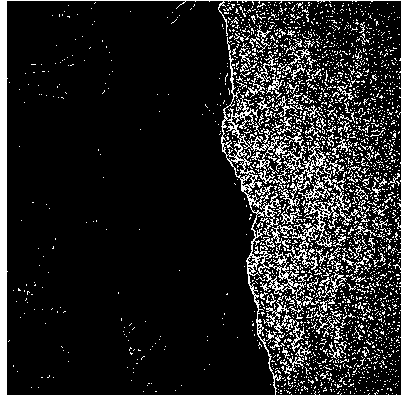Preparation method of graphene-carbon nano-tube composite nanofiltration membrane with high flux
A carbon nanotube composite and graphene technology, applied in chemical instruments and methods, membrane technology, semi-permeable membrane separation, etc., can solve the problems of low water flux of graphene nanofiltration membrane, and achieve good thermal stability and chemical stability. Stability, easy cost, good effect of anti-fouling performance
- Summary
- Abstract
- Description
- Claims
- Application Information
AI Technical Summary
Problems solved by technology
Method used
Image
Examples
preparation example Construction
[0023] A preparation method of graphene-carbon nanotube composite nanofiltration membrane, comprising the following specific steps:
[0024] (1) Disperse carboxylated carbon nanotubes in deionized water, then add partially reduced graphene oxide to the above-mentioned carbon nanotube dispersion, and obtain a mixed dispersion after ultrasonic dispersion. The concentration of the carboxylated carbon nanotubes 0.08-0.8mg / L, the concentration of partially reduced graphene oxide is 0.15-1.5mg / L;
[0025] (2) Then pour the mixed dispersion prepared in step 1 into a suction filter bottle with a porous support membrane, and perform suction filtration for 0.1 to 10 hours to obtain a composite nanofiltration membrane;
[0026] (3) The composite nanofiltration membrane prepared in step 2 is vacuum-dried at 40-100° C. to obtain a high-flux graphene-carbon nanotube composite nanofiltration membrane.
[0027] The partially reduced graphene oxide in the step 1 is obtained through the follow...
Embodiment 1
[0036] 1. Preparation of partially reduced graphene oxide:
[0037] 1.1 Use hummer to prepare graphene oxide solution. For the preparation method, refer to Z. Xu, Y. Zhang, P. Li, C. Gao, ACS Nano 2012, 6, 7103.
[0038] 1.2 Measure the concentration of the graphene oxide solution prepared in step 1.1 to be 5.6g / L.
[0039] 1.3 Add water to the graphene oxide solution prepared in step 1.1, and dilute it into a graphene oxide solution with a concentration of 0.5g / L;
[0040] 1.4 Heat the graphene oxide solution prepared in step 1.3 to reflux at 90° C. for 3 hours to obtain a partially reduced graphene oxide solution with a solubility of 0.5 g / L.
[0041] 2. Disperse 24 μg of carboxylated carbon nanotubes in 300ml of deionized water, and then ultrasonically disperse for 30 minutes; then add 900 μl of the partially reduced graphene oxide solution prepared in step 1 to the above dispersion, and in the resulting mixed solution, The concentration of carbon nanotubes was 0.08 mg / L,...
Embodiment 2
[0046] 1. Preparation of partially reduced graphene oxide:
[0047] 1.1 Prepare graphene oxide solution with hummer.
[0048] 1.2 Measure the concentration of the graphene oxide solution prepared in step 1.1 to be 7.5g / L.
[0049] 1.3 Add water to the graphene oxide solution prepared in step 1.1, and dilute it into a graphene oxide solution with a concentration of 0.5g / L;
[0050] 1.4 Heat the graphene oxide solution prepared in step 1.3 to reflux at 120° C. for 1 hour to obtain a partially reduced graphene oxide solution with a solubility of 0.5 g / L.
[0051] 2. Disperse 240 μg of carboxylated carbon nanotubes in 300ml of deionized water, and then ultrasonically disperse for 30 minutes; then add 90 μl of the partially reduced graphene oxide solution prepared in step 1 to the above dispersion, and in the resulting mixed solution, The concentration of carbon nanotubes was 0.8 mg / L, and the solubility of partially reduced graphene oxide was 0.15 mg / L, followed by ultrasonic di...
PUM
| Property | Measurement | Unit |
|---|---|---|
| Concentration | aaaaa | aaaaa |
Abstract
Description
Claims
Application Information
 Login to View More
Login to View More - R&D
- Intellectual Property
- Life Sciences
- Materials
- Tech Scout
- Unparalleled Data Quality
- Higher Quality Content
- 60% Fewer Hallucinations
Browse by: Latest US Patents, China's latest patents, Technical Efficacy Thesaurus, Application Domain, Technology Topic, Popular Technical Reports.
© 2025 PatSnap. All rights reserved.Legal|Privacy policy|Modern Slavery Act Transparency Statement|Sitemap|About US| Contact US: help@patsnap.com


